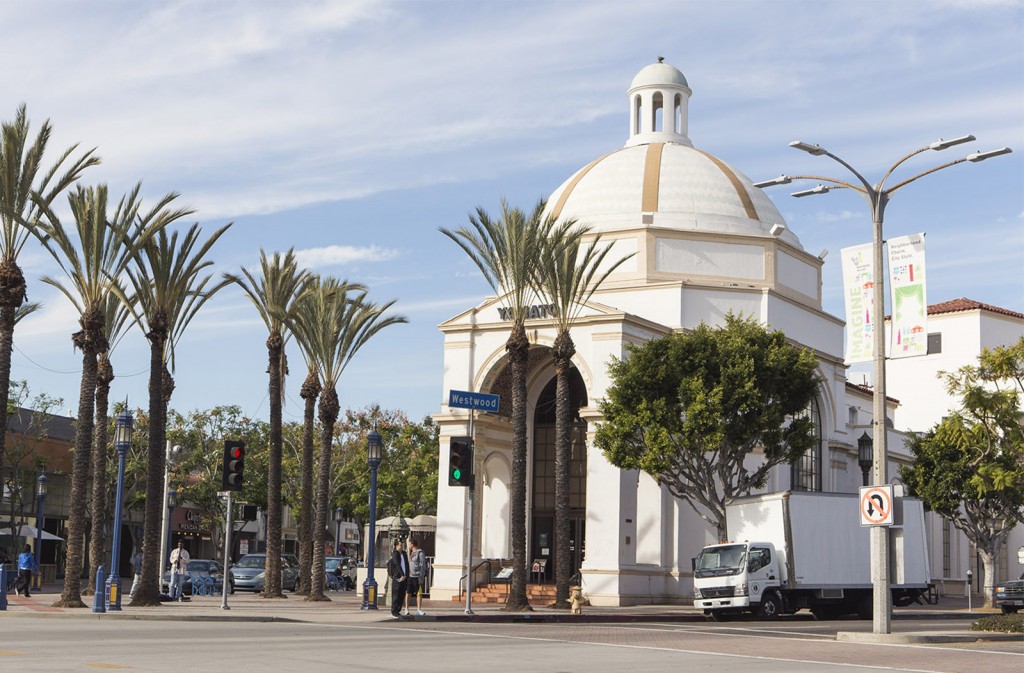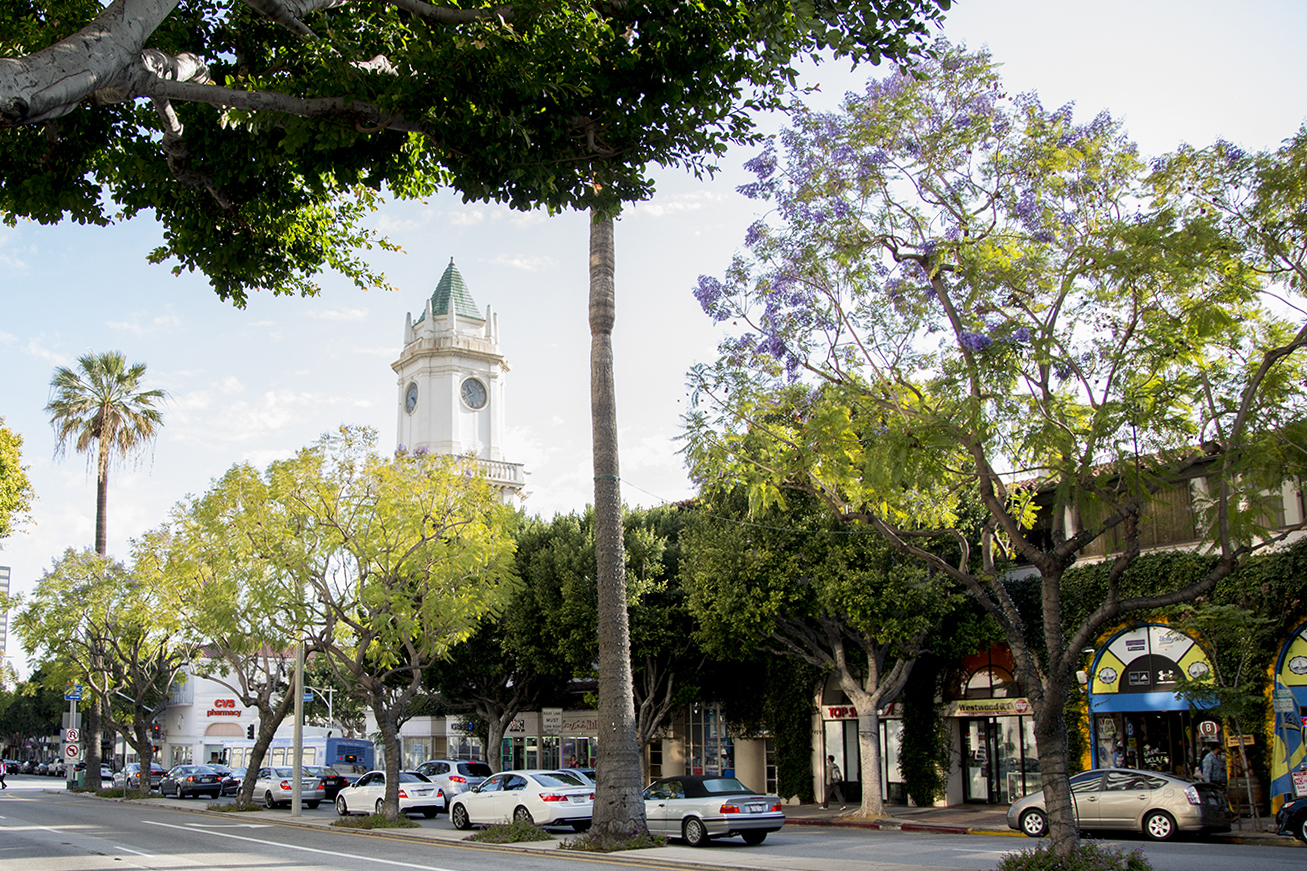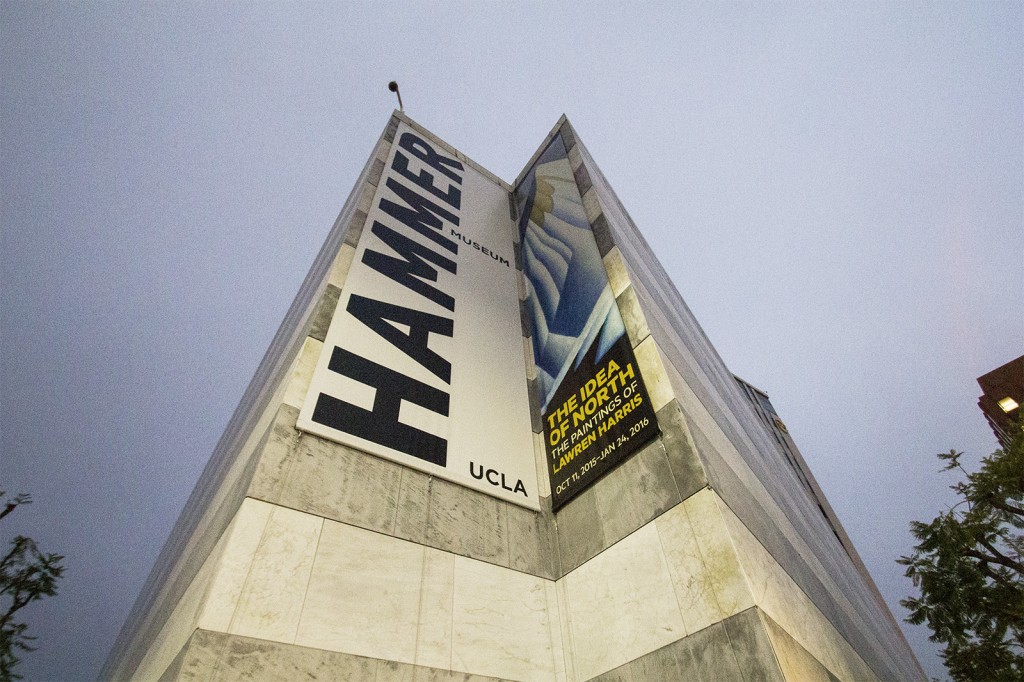I’m writing the rough draft of this column in a booth at the Westwood Denny’s, my favorite restaurant of well, anywhere. But as much as I love the delicious eats and free Wi-Fi this diner offers, it’s a shame that it’s one of the few businesses open in Westwood Village past 10 p.m.
By now, the rise and fall of Westwood Village as a commercial center has been well-documented. Once the Westside’s hottest regional shopping and entertainment destination, the Village fell on hard times in the face of stiff competition from newer, bigger hubs like downtown Santa Monica and Century City. Since then, it’s struggled to support businesses or draw a large customer base from UCLA and surrounding neighborhoods.
A big part of the issue stems from the lack of diverse retail and entertainment options provided by the district. Stroll down Westwood Boulevard and you’ll find a mix of chain restaurants and obscure boutique shops occupying appealing historic buildings. Notably absent from the picture: entertainment venues, residential development or a practical mix of businesses. It’s manifested itself in empty storefronts, a cycle of businesses in and out of the Village and a town that starts dozing off after eight. It’s certainly not a fun place for a college student to hang out.
But there’s still hope for the neighborhood. It has the cultural amenities, community interest and most importantly, the incredibly good local demographics, including nearly 50,000 UCLA students and employees, it needs to become the viable commercial destination it was before. It’s time to capitalize on that potential – that means revamping outdated local regulations and pushing for more entertainment venues, better business diversity and more residential development in the heart of the Village.

Local leaders need to push a consistent, cohesive development strategy that toes the fine line between the needs of UCLA students and the wealthier, permanent population. Likewise, students need to be adamant about getting their voices and interests heard and kindling a deeper involvement between the UCLA and Westwood communities. Retail development strategies aren’t exactly sexy, but Westwood’s identity as a hub and destination for the Westside is at stake.
Revitalization will start with the Westwood Village Improvement Association, better known as the BID. It’s a professional nonprofit tasked with keeping Westwood “clean, safe and beautiful” – at least according to their motto. After successfully renewing its contract for the next 10 years last spring – up from its previous three-year contracts – Executive Director Andrew Thomas says the BID will be able to focus less on keeping itself alive and more on actually improving Westwood.
Now they’re looking to revamp the Westwood Specific Plan, the 25-page ordinance approved by the City Council that regulates everything from development to transportation in the Village. It was first approved in 1989 and was last amended 12 years ago in 2004. The BID is accepting applications for an ad hoc advisory committee to suggest new changes to the Specific Plan.
[Related: Westwood Village Improvement Association asks for community input]
This committee is one of the many ways students should become involved in making Westwood a more appealing place for themselves and their peers. Clearing the cobwebs from the local regulations to reflect the present challenges facing Westwood will help better set development and design standards and a path towards a healthy mix of residential and commercial usage.
However, the Specific Plan is only one piece of the puzzle. It should kick-start a larger process that makes Westwood a more attractive place for businesses and customers alike, but it will ultimately be up to local organizations like the BID, the Westwood Neighborhood Council and the Westwood Community Council to make Westwood’s interests and needs known to government and business interests. In turn, students need to become involved – attend their meetings, apply for student positions on their boards, and invest in community businesses – if they want to see their neighborhood improve.
So what would improvement look like? There’s a lot of factors at play here, and it’s difficult to single out any one major change that must occur. However, the guiding principles of the Westwood Village Retail Strategy give us a solid idea of what the end product should be: a good balance of businesses serving a wide variety of student and resident needs, expanded entertainment options and an emphasis on mixed-use developments – that is, a building used for commercial and residential purposes.
[Related: A new school year, a new set of businesses for Westwood Village]
Now, we all know Westwood sucks as a college town. There are only two bars – one of them is in Ralph’s, and trust me, there’s nothing fun about going to a grocery store to get drunk. Entertainment options are sparse beyond the two single-screen movie theaters on either side of Broxton and Weyburn. And most egregiously, there’s no reliable live music venues. Put together, that means Westwood is losing business to more bustling Westside locales like Santa Monica when students want a night out, according to the Retail Strategy. There’s a 40,000-student university literally across the street; the fact that there’s little to keep them in the Village is a glaring problem.
That’s why students need to speak up and push for more student-oriented amenities in the Village. Amending the Specific Plan would be a great starting point. Updated usage regulations could provide a business climate more favorable to venues open at later hours, or those with outdoor seating components.
Undergraduate Student Association Council President Danny Siegel hopes to spearhead such a cultural shift, pointing to the ease of access Westwood offers UCLA students and the potential mutually beneficial relationship between the two communities. The thing is, Siegel’s idea will only work if students cooperate. They need to voice their interests at local council and BID meetings, support local businesses and invest more heavily in the community – giving potential business interests an extra incentive to cater to their interests.
Students should push for a few specific changes if they want to see Westwood become a more vibrant, fun place to be.

First, Broxton Avenue shouldn’t be a dead street after 10 p.m. It has incredible potential as the Village’s entertainment hub, but that potential’s not being met by the spate of restaurants that line its wide sidewalks and close early in the evening. With an updated Specific Plan, the BID and the neighborhood councils will be able to make a stronger case for bars, music clubs and even arcades or game clubs to settle in Westwood and reignite our comatose nightlife.
But a bustling entertainment scene is only one part of the equation – Westwood should also serve residents’ needs beyond basic groceries and fast food. Steve Sann, chairman of the Westwood Neighborhood Council, is a vocal proponent of business diversity. He says that one of Westwood’s biggest current problems is the short-sighted leasing decisions sometimes made by landlords and business leaders that lead to an imbalance of business offerings.
Both Sann and Thomas pointed to the announcement that a 7-Eleven convenience store would open in the historic clock tower on the key intersection of Westwood Boulevard and Weyburn Avenue as a current example of the Village’s resource mismanagement. They have a point. I love cheap junk food just as much as any college student, but the fact is that a 7-Eleven simply won’t give anyone, student or visitor, a compelling reason to come to Westwood – especially if it’s taking up space in one of the neighborhood’s oldest buildings.
[In-depth: A look at some of Westwood’s mainstays]
There’s some relatively easy changes to the Specific Plan, which provides specific definitions for types of businesses, that could provide the framework for better use of Village property. For instance, the BID’s ad hoc committee could recommend a ban on convenience stores located on street corners, or a cap on the number of fast food restaurants that can occupy a single block. These kinds of changes will encourage landlords and business interests to attract more diverse kinds of businesses, like bookstores or a coveted Apple store that local leaders have been trying to lure into the Village.
Third, the neighborhood could benefit from more mixed-use developments. The idea is that when more people live directly above, below or next to businesses, they’re more likely to patronize those places, and at hours beyond normal work or school hours. That means a more bustling neighborhood that remains active all day.

The biggest such development in the Village so far is the fancy Palazzo Westwood apartments on Glendon, which also houses stores like Trader Joe’s and Rite Aid. That said, Thomas recalls a long and contentious fight to get the project approved, especially over strict height regulations, which led to a less than ideal outcome. Fortunately, the Specific Plan can also be amended to provide more flexibility over height regulations – perhaps if the building were designated mixed-use, or increased the number of parking spaces it must offer.
These are all changes Westwood should make in order to become a better, more active and more commercially viable destination. But writing opinion columns about it is easy. The hard part is actually getting it done.
Westwood’s character lends itself beautifully to a regional destination, but the entire community – students, residents and local leaders – need to push to make the changes needed.
Now, if you’ll excuse me, it’s time for me to take the long walk home from Denny’s through the dark, empty streets of Westwood. Hopefully in a few years, it’ll be a little less lonely.

Part of the issue, back in the 80’s and 90’s was the issue of transients and petty crime. Also, a murder or two. Murder does drive shoppers away. It drove shoppers away, outside of students, and then the retailers went away. Add in the new Internet age, and you can see the brick and mortar shops have quite a challenge to make a go of it in Westwood. There are still issues with a large displaced population. Housing is too expensive for even students. And the shopping area isn’t safe after 10pm, no matter what UCLA says. In order to bring people back, the place must be SAFE and INTERESTING. Those are the two commandments. One way is to encapsulate Westwood like The Grove, with it’s own local security, and ample parking in parking structures. These would be major changes and I’m not sure the governing authorities want to face the differing groups who may have interests in things not changing. But Westwood needs more than a makeover. It needs a do-over. We’ve tried makeovers in the 80’s and the 90’s and still shoppers went away, and so did the retailers. You want people to go to Westwood like they do Hollywood and Highland? Or like The Grove? You need a major do-over from the ground up.